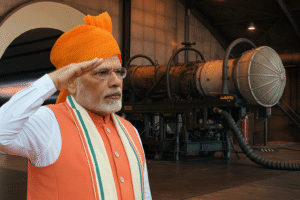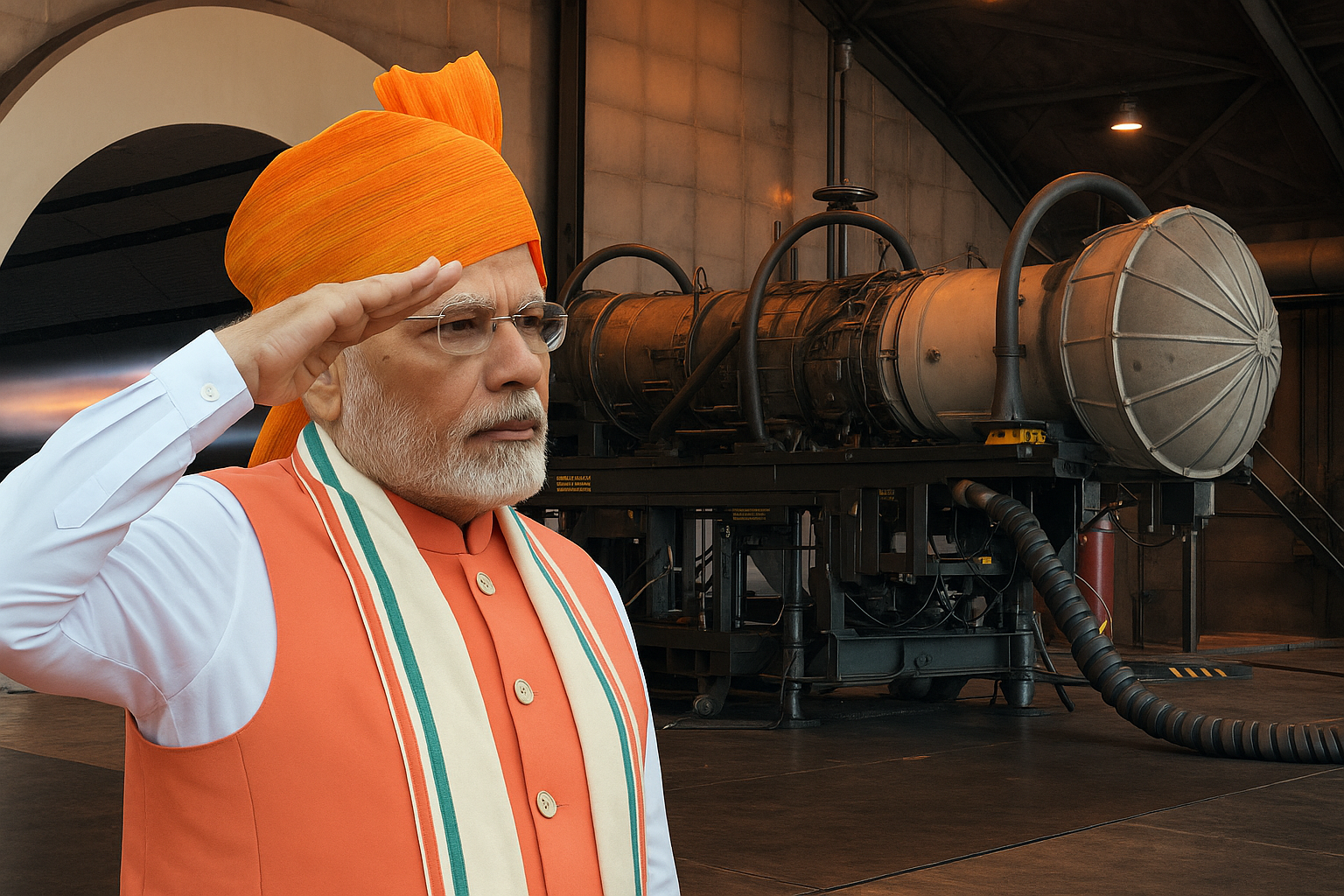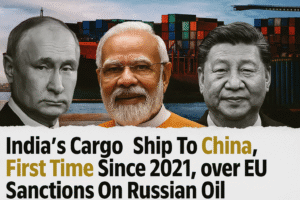Table of Contents
Why Jet Engines Are Central to India’s Defence Future
Pointer Highlights:
• Engines power speed, altitude, and endurance of fighter jets.
• India relies on GE-404 and GE-414 engines from the U.S. for Tejas.
• Geopolitical tensions and delivery delays highlight strategic risks.

Modi’s Call to Action on Independence Day 2025
In his speech, Modi issued a direct challenge to India’s scientists, engineers, and defence industry: design and build a Made-in-India jet engine. This is one of the most complex engineering feats on Earth, achieved only by the United States, Russia, France, the UK, and China. Success requires mastery over advanced materials, thermodynamics, and precision engineering.
Modi’s message was blunt: India must join the elite club of nations that control their own skies.
#WATCH | PM Narendra Modi says, "Today, I urge the young scientists, talented youth, engineers, professionals and all departments of the Government that we should have our jet engines for our own Made in India fighter jets."
— ANI (@ANI) August 15, 2025
Video: DD pic.twitter.com/FEjtAqvktt
Narrative: To reinforce his argument, Modi pointed to Operation Sindoor, a recent military mission where India successfully deployed domestically manufactured equipment. This wasn’t just a battlefield victory it was proof that India’s Aatmanirbhar Bharat (Self-Reliant India) strategy is yielding real results.
Pointer Highlights:
• Operation Sindoor showcased Made-in-India military assets.
• Victory validated the Make in India approach for defence.
• Proved that indigenous innovation can deliver in combat conditions.
HAL Expands Fighter Jet Production
India’s aerospace giant, Hindustan Aeronautics Limited (HAL), has also aligned with Modi’s vision. A new third production line for LCA Tejas in Nashik has been inaugurated, raising production capacity to 24 aircraft per year.
This expansion strengthens India’s ability to supply its own forces and potentially positions the Tejas for exports, turning India into not just a defence consumer but a defence exporter.
Partnerships to Power the Jet Engine Dream
While India aims for independence, Modi’s government is realistic about the challenges of building a jet engine from scratch. Negotiations are underway with global leaders like Rolls-Royce (UK), Safran (France), and a Japanese firm to secure technology transfers. These collaborations could allow India to leapfrog hurdles while still ensuring long-term sovereignty.
Beyond the Jet Engine: Tech Sovereignty Roadmap
Independence Day 2025 wasn’t only about defence. Modi linked the call for a homegrown jet engine to a larger push for technological independence. His announcements covered:
• Cybersecurity & AI: Indigenous operating systems and digital frameworks.
• Deep Water Exploration: Missions to harness offshore oil and gas.
• Semiconductor Mission 2025: India’s first Made-in-India chips expected by year-end, with six units under development and four already approved.
These initiatives highlighted that sovereignty is no longer just about territorial borders—it is about control over technology.
Citizens’ Role: Buying Local as National Strength
Modi concluded with an emotional appeal, urging every Indian to consciously choose Made-in-India products. From defence equipment to daily essentials, each purchase strengthens the nation’s resilience. He emphasized that this choice should come not from compulsion but from pride and patriotism.
Conclusion: A Jet Engine Is More Than Metal

Pratik Kondawale
Strategist | Indian Defence & Global Affairs
Founder of GeoLens.in, Pratik writes in-depth analysis on India’s defence strategy, military tech, and global power shifts delivering sharp insights through an Indian lens.


I really like what you guys tend to be up too. This kind of clever work and reporting! Keep up the amazing works guys I’ve added you guys to my blogroll. http://www.kayswell.com
Hi to every body, it’s my first pay a visit of this weblog; this weblog contains remarkable and genuinely excellent material designed for readers.